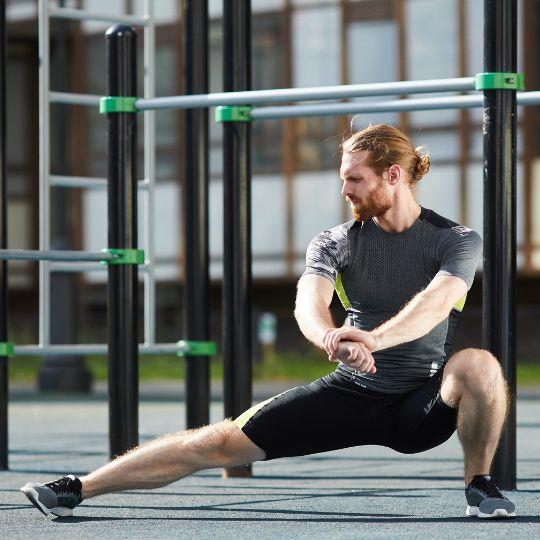Unfortunately, the adductors are a group of muscles that are often overlooked or even neglected in strength training. When thinking of the musculature of a strength athlete, you may consider their pecs, shoulders, back, glutes, quads, and hamstrings. Adductors are responsible for a number of different functions, all important in the world of strength sports. This is fairly constant across various strength sports, including powerlifting, weightlifting, strongman, as well as body building. In this blog, I will explore the various roles they play and why they are vital for the strength athlete.
Stability and Balance:
One of the primary functions of the adductors is to stabilize the pelvis and lower body during movement. When you’re performing compound exercises like squats, deadlifts, and lunges, maintaining proper pelvic alignment is critical for generating power and preventing injury. These muscles work in concert with other stabilizing muscles to ensure that the pelvis remains level and stable. This allows you to exert maximum force without compromising form or risking injury.
Force Transmission:
Your adductors play a key role in transmitting force from the lower body to the upper body during strength movements. Whether it’s pushing off the ground during a heavy squat or driving upward during a clean and jerk, they contribute to the kinetic chain, transferring power efficiently through the body. Strong and well-developed adductors enhance force production and improve the overall efficiency of movement. This enables athletes to lift heavier weights and perform at their peak.
Injury Prevention:
Weak or imbalanced adductors increase the risk of injuries such as groin strains, hip impingement, and knee instability. By strengthening the these muscles, you can mitigate these risks and maintain optimal joint health and stability. Additionally, balanced adductors help alleviate stress on surrounding muscles and joints. This reduces the likelihood of overuse injuries and chronic pain. Incorporating exercises that specifically targeting adductors can help you prevent injuries and prolong your athletic career.
Functional Movement Patterns:
In addition to their role in traditional strength training exercises, the adductors are involved in a variety of functional movement patterns essential for athletic performance. From lateral lunges to lateral sled pushes, the adductors contribute to multidirectional movement and agility. By training them through a variety of movement patterns, you can improve your overall athleticism, agility, and performance. This is especially helpful in sports that require quick changes in direction and lateral movement.
Core Stability:
The adductors are integral components of the body’s core musculature, working in tandem with the abdominals, obliques, and lower back muscles to provide stability and support. A strong and stable core is essential for maintaining proper posture, transferring force efficiently, and preventing injuries. Strengthening the adductors can improve your core stability, balance, and overall performance in the gym or on the field.
In conclusion, while often overshadowed by more prominent muscle groups, the adductors play a vital role in the strength, stability, and overall performance of athletes. From providing stability and balance to transmitting force and preventing injuries, these muscles are indispensable when you’re striving to reach your full potential. By incorporating targeted exercises to strengthen the adductors into your training routines, you can improve your performance, reduce the risk of injuries, and unlock new levels of strength and athleticism.





